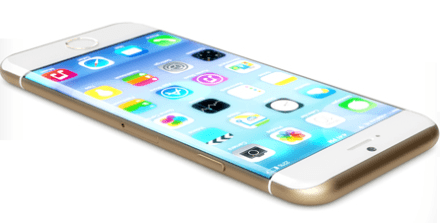Published on the 31/07/2014 | Written by Newsdesk

Apple may have single handedly disrupted the music industry with iTunes, but it may have missed the boat in terms of its ability to disrupt payments…
The expected advent of Apple’s iPhone 6 and iWatch have the payments sector in a flurry of excitement, wondering whether Apple can do to payments what it did to music. Every iPhone since the iPhone 4S was released in 2011 has been expected to have an embedded near field communications chip allowing contactless payment. To date – nothing.
But reports are emerging that the iPhone 6 and iWatch will have NFC, and that Apple will also launch its own mobile payments system. The question for businesses which accept online payments is – will this upset the payments status quo and force companies to rebuild websites and point of sale systems to accept Apple branded payments?
Apple’s payments capability was considered in Australia’s recently released Financial Services Inquiry which noted that the company already operated a closed loop pre-paid system, and was holding significant funds in its iTunes walled payments garden. The report also noted the company had signalled its intent to develop more payments capabilities for its devices and questioned whether organisations such as Apple should face greater regulatory controls in the future.
The Australian Information Industry Association meanwhile has just released a white paper on payments innovation which notes that; “Apple, Google, PayPal and other aggregators are focusing on customer engagement by providing value-added services, with the aim of reducing the financial institutions to nothing more than moving lumps of funds from one institution to another.”
In a blog post this week Forrester analyst Oliwia Berdak noted that Google’s foray into digital wallets has shown it wants to disrupt the payments ecosystem. But she believes Google won’t become a bank, rather that by integrating its search engine, Google maps, Gmail, Play Store and Google Now the company could re-define financial services.
“For a firm that uses information to solve problems, a logical next step is to use product, consumer and transaction data to deliver financial advice and tailored product recommendations. Google won’t become a bank – it’s not another bank that people want – but it could easily become a financial services hub to facilitate the relationship between consumers and providers of financial services,” according to Berdak.
As for Apple, the rise of the Android smartphone, and particularly NFC enabled smartphones from companies like Samsung, have already seized the high ground of the smartphone enabled payments battle. And a number of payments providers are urging caution with regard to what Apple might serve up. Speaking at an AIIA payments innovation event David Joss, CEO of Bendigo Bank-owned Community Telco Australia, which conducts much of the bank’s technological innovation, said that consumers should be wary as any attempt by Apple to boost its payments profile would represent an attempt to “trap you in their ecosystem”.
But John Tait managing director of payments processing specialist First Data, said for companies to succeed in payments innovation they would have to secure the trust of consumers.
The AIIA paper cited a survey of around 4000 Americans conducted by Accenture asking which of a range of non-banks might they be willing to bank with in the future.
While 50 percent said they would be happy to bank with Square and 41 percent with PayPal, only 29 percent would be likely to bank with Apple – exactly the same number as might bank with discount supermarket Costco.
But as Forrester notes – is that the right question to be asking? Consumers might not bank with Apple in the traditional sense of the world, but they could well lap up a new breed of financial services which has yet to be defined.
The online payments battle is only just beginning.



























